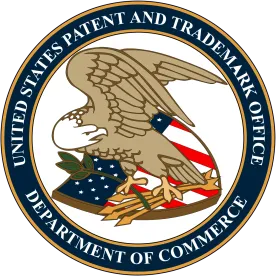Since the decision in Alice Corp. v. CLS Bank International, 573 U.S. 208 (2014), one of the most hotly discussed topics in the US patent field has been patent eligibility under 35 U.S.C. § 101 (“§ 101”). Certainly, countless hours have been spent debating, discussing, and arguing proper application and interpretation of § 101. This is the result of significant uncertainty felt throughout the field with respect to application of § 101 at the USPTO and by the courts. As 2019 has shown thus far, § 101 continues to be in a state of flux despite efforts by the USPTO and the courts to provide predictability and clarity to subject matter eligibility determinations, and thus uncertainty is likely to continue.

2019 Revised Patent Subject Matter Eligibility Guidance
On January 7, 2019 the USPTO issued the 2019 Revised Patent Subject Matter Eligibility Guidance (“2019 PEG”) for determining whether patent claims recite eligible subject matter under § 101. See our prior post. The 2019 PEG sets out to improve the manner and consistency of how § 101 is applied during examination of a patent. In addition, the 2019 PEG was intended to aid examiners in more readily assessing a claim’s eligibility under § 101.
The 2019 PEG revised step 2A of the Mayo test, a judicially created test used for determining subject matter eligibility under § 101, and left step 1 and step 2B of the Mayo test unchanged. In particular, the 2019 PEG replaced the single inquiry of whether a claim is directed to a law of nature, a natural phenomenon, or an abstract idea with a two prong inquiry that first resolves whether a claim recites an abstract idea, a law of nature, or a natural phenomenon and then resolves, if the answer to the first prong is yes, whether the claim recites additional elements that integrate the judicial exception into a practical application. These updates came after 2018 included at least four separate memoranda and training releases from the USPTO regarding subject matter eligibility procedure under § 101.
Draft Bill Text To Reform § 101
On May 22, 2019, less than five months after release of the 2019 PEG, various Congressional members released draft bill text to reform § 101. Similar to the 2019 PEG, the draft bill text was directed to predictability and stability of subject matter eligibility determinations. Notably, among other changes, the draft bill text provided a definition of the term “useful” to be used in conjunction with uses of this term in § 101, and removed the term “new” from instances of the phrase “any new and useful” as is currently included in § 101. In addition, the draft bill text provided a statutory requirement that subject matter eligibility be determined while considering the claimed invention as a whole, updated the provisions of § 112 related to functional claim elements, and included additional legislative provisions to guide subject matter eligibility determinations.
Since its release, the draft bill text has garnered significant attention and discussion from industry leaders, patent practitioners, and inventors. The Senators involved with the draft bill text held Senate Judiciary Subcommittee hearings on June 4, June 5, and June 11 of this year. The Subcommittee heard from panelists that included a former judge, members of academia, former leaders of the USPTO, patent practitioners, and many others. While some changes to the draft bill text are likely following the Subcommittee hearings, full adoption of even a revised version of the current draft bill text could bring significant changes to subject matter eligibility determinations and could significantly diminish the relevancy of the 2019 PEG.
Informative PTAB Decisions
On the heels of the release of the draft bill text, the Patent Trial and Appeal Board (PTAB) has designated four more decisions applying the 2019 PEG as informative. Taken on July 1, 2019, this action added Ex parte Olson, Ex parte Kimizuka, Ex parte Savescu, and Ex parte Fautz to the previously designated Ex parte Smith as PTAB decisions that are informative with respect to the 2019 PEG. Included in this group are two decisions that reverse examiner rejections under § 101 (Ex parte Olson and Ex parte Fautz) and two decisions that affirm examiner rejections under § 101 (Ex parte Kimizuka and Ex parte Savescu). All four of these decisions hinged on the second prong of the revised step 2A described above – that is, whether the claims recite additional elements that integrate a judicial exception into a practical application after having been determined to recite the judicial exception. While we now have five PTAB decisions that are designated as informative, the 2019 PEG is still very new, and the full scope of its impact on subject matter eligibility decisions is yet to be seen.
Conclusion
If anything can be learned from 2019 so far with respect to § 101, it is that subject matter eligibility will continue to be in a state of flux throughout this year and the coming few years. We can hope, and expect, for more PTAB decisions to be designated as informative and even possibly as precedential to guide practitioners and other stakeholders in the full scope of changes brought by the 2019 PEG. In addition, we will have to rely on court decisions to see the full effect of the 2019 PEG on subject matter eligibility determinations. We have already seen Cleveland Clinic Found. v. True Health Diagnostics LLC (non-precedential) from the CAFC, where the Court indicated that it was not bound by, and did not give deference to, the 2019 PEG. As the USPTO and the courts define the full practical effect of the 2019 PEG, practitioners and other stake holders can expect continued uncertainty during 2019 with respect to outcomes at the USPTO and the courts.




 />i
/>i
